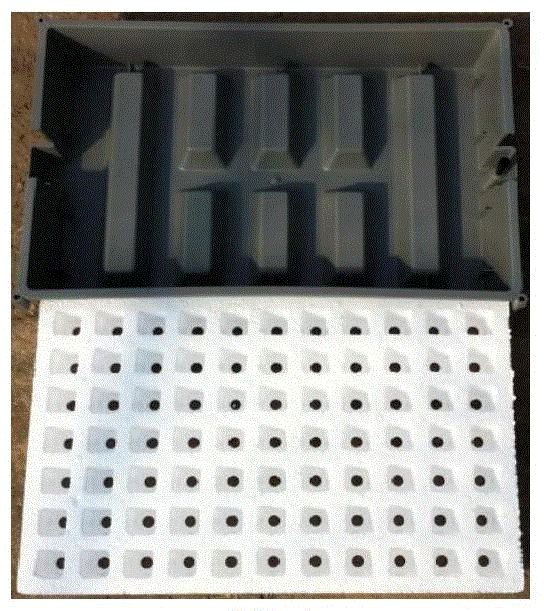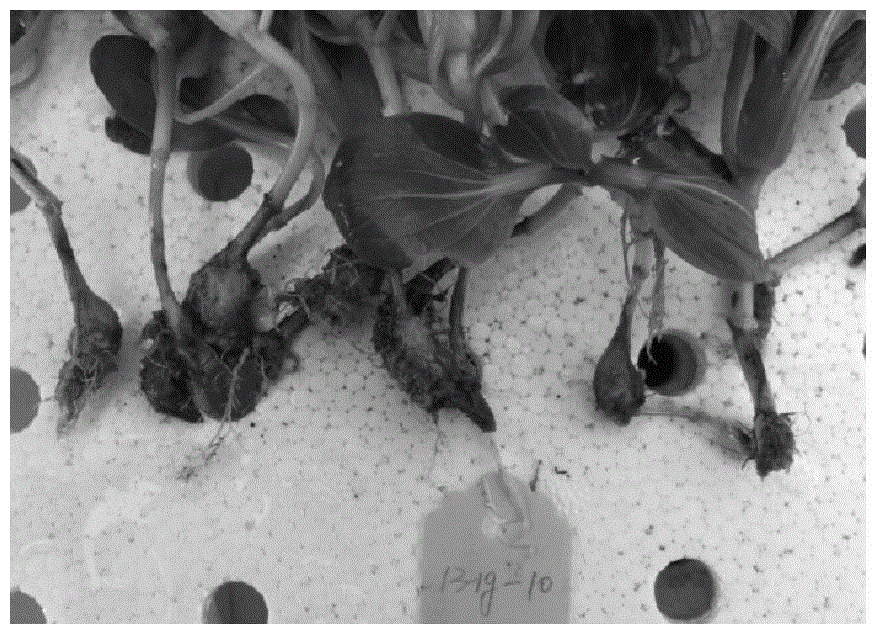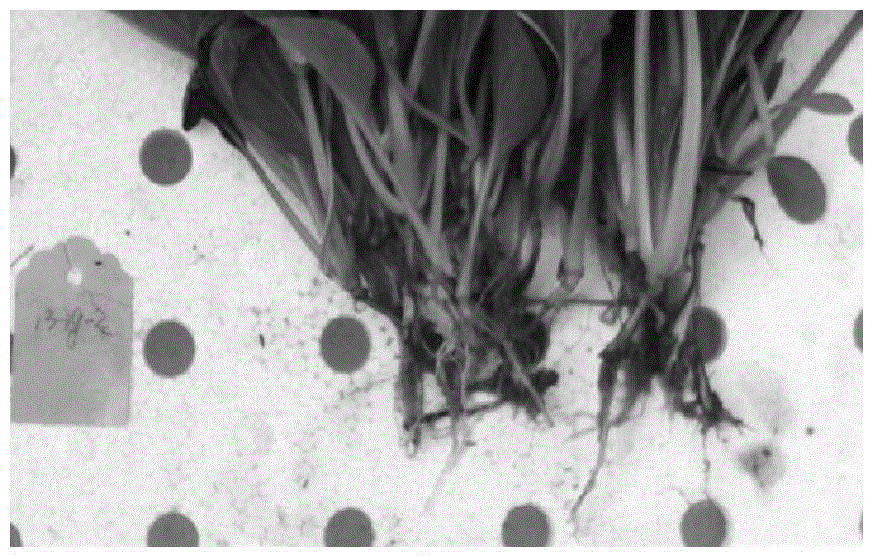Identification method for clubroot resistance of non-heading cabbages
A technology of head cabbage and identification method, which is applied in the field of identification of non-heading cabbage resistance to clubroot, can solve the problems of serious root disease of non-heading cabbage, loss of vegetable growers, and decline in yield, etc., so as to improve the resistance to clubroot Virulence, strong anti-infection, strong sensitivity
- Summary
- Abstract
- Description
- Claims
- Application Information
AI Technical Summary
Problems solved by technology
Method used
Image
Examples
Embodiment 1
[0026] Example 1, Identification and analysis of non-heading Chinese cabbage infected with clubroot in different periods
[0027] The non-heading cabbage mainly grown in Shanghai, the conventional variety Xin Aiqing and the heat-resistant variety Xinxiaqing, were treated with root clubroot suspension at the same time and concentration at different growth stages (cotyledon stage and three-leaf one-heart stage). deal with.
[0028] Test method: The test was carried out in the greenhouse of the test base of the Institute of Horticulture, Shanghai Academy of Agricultural Sciences. First, the fresh diseased tissues of clubroot of non-heading cabbage (that is, the root tumor of non-heading cabbage) were collected at Hongyang Farm, Qingpu District, Shanghai, washed and packed in plastic bags, and stored in a -20°C refrigerator . During the test, the root tumor was taken out, homogenized with a plant tissue grinder, filtered with four layers of gauze, centrifuged at 4000r / min in a r...
Embodiment 2
[0035] Embodiment 2, identification of clubroot resistance of non-heading Chinese cabbage of different varieties
[0036] Test materials: All the materials in the examples are provided by the Qingcai Research Group of the Institute of Horticulture, Shanghai Academy of Agricultural Sciences. Among them, the numbers are 13-1g-1 to 13-1g-52 and 13-1g-54 to 13-1g-61, all of which are inbred line materials purified by the research group for many years; the numbers are 13-1g-65 to 13 -1g-70 is the intermediate material; numbers 13-3g-1 to 13-3g-3 are the clubroot resistant Chinese cabbage varieties introduced by South Korea's Sunnis Seed Company.
[0037]Test method: The test was carried out in the greenhouse of the test base of the Institute of Horticulture, Shanghai Academy of Agricultural Sciences. First, the fresh diseased tissues of clubroot of non-heading cabbage (that is, the root tumor of non-heading cabbage) were collected at Hongyang Farm, Qingpu District, Shanghai, washe...
PUM
| Property | Measurement | Unit |
|---|---|---|
| Morbidity | aaaaa | aaaaa |
Abstract
Description
Claims
Application Information
 Login to View More
Login to View More - R&D
- Intellectual Property
- Life Sciences
- Materials
- Tech Scout
- Unparalleled Data Quality
- Higher Quality Content
- 60% Fewer Hallucinations
Browse by: Latest US Patents, China's latest patents, Technical Efficacy Thesaurus, Application Domain, Technology Topic, Popular Technical Reports.
© 2025 PatSnap. All rights reserved.Legal|Privacy policy|Modern Slavery Act Transparency Statement|Sitemap|About US| Contact US: help@patsnap.com



